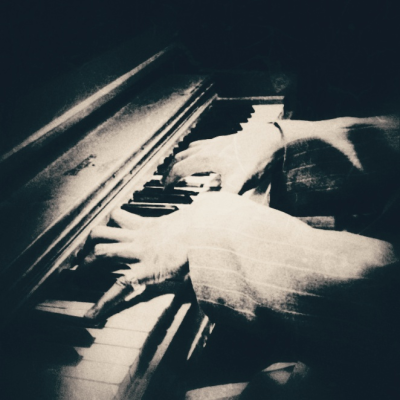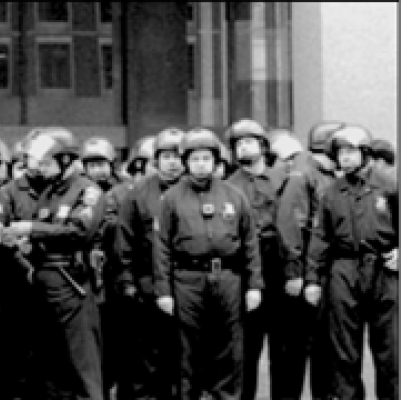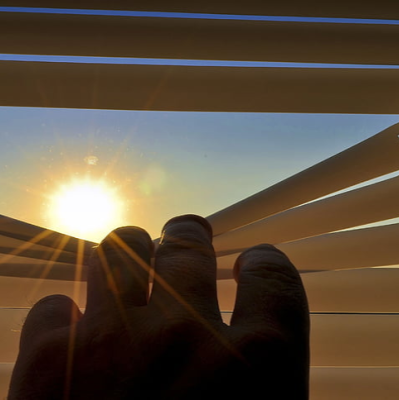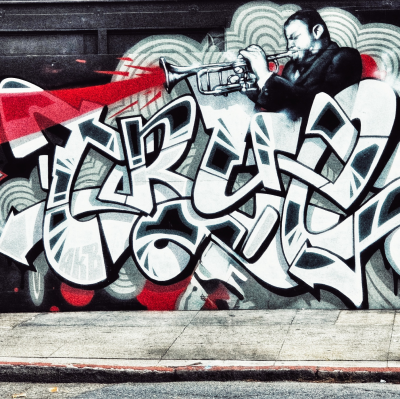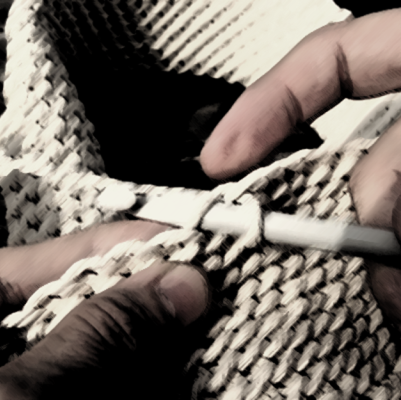John Kruth
“Bright Moments,” the first biography of the legendary jazz musician Rahsaan Roland Kirk, establishes once and for all the brilliant multi-instrumentalist’s place in the pantheon of jazz giants alongside Charlie Parker, Miles Davis and Thelonious Monk. Culled from three years of in-depth interviews and research, “Bright Moments” chronicles the tumultuous life of the neglected genius through enlightening observations and hilarious anecdotes by Kirk’s friends and family, as well as by famous contemporaries such as Quincy Jones, Allen Ginsberg, Yusef Lateef, Eric Burdon, Ken Kesey and Jethro Tull’s Ian Anderson.
“Bright Moments” is an incredibly accessible biography of a complex individual of staggering genius. It is fun, insightful, well-researched, and inspirational.
In our exclusive interview, biographer John Kruth discusses Kirk’s remarkable life and those he touched with Jerry Jazz Musician publisher Joe Maita.
*
Rahsaan Roland Kirk
_____
Notes from John Kruth
“Bright Moments” is the story of a neglected jazz genius. Bright Moments! and welcome to the wild world of Rahsaan Roland Kirk, a one of a kind musician and human being. As some of you may know Rahsaan played two and three saxophones at a time and developed a unique system of breathing some called circular breathing or spherical breath which allowed him to play continous, non-stop solos that mezmerized audiences everywhere. He was also fantastic on the clarinet and flute (an enormous influence on Jethro Tull’s Ian Anderson).
Kirk played the history of jazz or what he called “black classical music” from the roots to the fruits, recorded over 35 records and toured the world. In this, his first biography, I have interviewed his peers, friends, band members, widow and doctor. They include: Quincy Jones, Sonny Rollins, Grover Washington, Ken Kesey, Allen Ginsberg, Eric Burdon and Ian Anderson to name a few. Find out who Jimi Hendrix’s “favorite musician” was! As Charles Mingus once said, “This man is what jazz is all about – He’s REAL!”
Music aside – Rahsaan’s life was a series of hurdles which he lept with courage and integrity. Blinded at the age of two when a careless nurse put too much medicine in his eyes, Kirk travelled the world playing his unique music and spreading “bright moments.” Every day was a battle for Rahsaan. He was constantly confronted with issues of race and people’s ignorance and lack of consideration for the blind (or “the sightless” as he preferred). Then there was his music – He was constantly attacked by critics and jealous musicians for his sensational musicianship and outspoken opinions. He was once actually arrested in Cleveland in the early seventies for supposedly trying to hi-jack a plane and spent 3 days in jail in Akron!(I did tell you he was sightless right?).
There are plenty of outrageous stories recalled by his widow,Dorthaan friend and producer, Joel Dorn and fellow musicians but what was most touching in writing Kirk’s odyssey was how he fearlessly continued performing after his devistating stroke at age 39 in November of 1975. Rahsaan re-designed his saxophone and flute in order to play them with one hand and a number of musicians (Sonny Rollins and Pharoah Sanders) testify to the fact that Kirk was better with one hand than most saxophinists were with two.
This book was a joy to write! If you already know and love Kirk’s music you’re sure to get a kick out of it. If you don’t, I’m jealous. I wish I could rediscover this man’s music and life all over again! Rahsaan was a true American original and 23 years after his death the time has come for the public to appreciate his genius.
____________________________________
Interview with John Kruth
JJM I have always liked Rahsaan Roland Kirk. I can’t say I am his biggest fan, but I have always liked his work since I was a young man. When I saw your book come through my office, I was very interested in reading it and was struck by the research you did and the quality of the writing. What is your background?
JK I am a musician myself. I have six CD’s out, all that have an esoteric quality to them. I had five or six small press poetry and short story books. I have been a published poet since I was about 18 years old in various publications, including the New York Times. Rolling Stone printed my poetry years ago. I don’t really consider “Bright Moments” to be a straight biography. Its purpose is to try to express the spirit of Rahsaan Roland Kirk. That afforded me the opportunity to actually be a writer instead of sitting at a desk, typing, which comes with the territory of writing a biography or something dry and historic.
JJM When you were a kid, who was your childhood hero?
JK Bob Dylan and John Lennon were heroes of mine. I also liked a lot of writers. I loved Jack London and Allen Ginsberg.
JJM Was there a particular book that inspired you to want to become a writer?
JK In this instance, the book that really told me that I could write, was Michael Ondaatje’s “Coming Through Slaughter.” It is a fictionalization of trumpeter Buddy Bolden. While my book on Rahsaan is not a work of fiction, I don’t believe a fiction writer could have created him.
The book all started because I had a thyroid condition and couldn’t tour as a musician. While I was recuperating in bed, I called Rahsaan’s old producer Joel Dorn and we just started with all these incredible conversations about Rahsaan. Once things got going, he encouraged me to call people like Yusef Lateef. That’s basically how it all happened. I was planning on writing an article on Kirk for publication not in the music press, but in the general press. I want to emphasize the importance of Rahsaan as a personality, as a human being that overcame so many challenges in life, as a human spirit. He gave me the incentive to get healthier.
JJM He is really a larger than life character
JK Yes he was, but at the same time, I don’t present him as some monster like Gigelator, this is a guy from Columbus, Ohio. People would be amazed that Kirk (he was blind) could tell what color shirt they were wearing, what color eyes they have. He incited that kind of worship and that kind of spirited “voodoo quality.” But at the same time, whether it was because he could play three horns at once or because he was sightless, that added to it, for sure.
JJM It was really cool toward the end of the book where you were describing how people get connected with Rahsaan as a musician
JK It’s called “The Life and Legacy of Roland Kirk,” and that’s really important – the legacy of what Rahsaan did. His life didn’t really just end with his death, his music deeply affected so many people, whether they were musicians, writers or hot dog vendors. That’s what I really wanted to get across.
JJM It was fun reading how you got involved with Rahsaan’s music. You heard it for the first time driving into the toll plaza going into the Lincoln Tunnel
JK I was concerned that people thought I was making some kind of artistic license with that story, but yes, I pulled over before going into the tunnel and was amazed at what I was hearing.
JJM How has the book been received?
JK The book has been basically loved or highly criticized. It doesn’t fall in between much, and I think that is very fitting for who Rahsaan was. We have received many nice received reviews from musicians and a variety of publications on the one hand, and other, like Down Beat, for instance, hated the book.
JJM Why is that?
JK Because I think they come from a dry, historical approach.
JJM See, that’s exactly why I liked the book. You presented Kirk’s story in a way that made me want to understand him in human, emotional terms.
JK Sometimes the jazz community is its own worst enemy. Yusef Lateef pointed it out while I was doing an interview with him. He was very concerned about saying anything that could be interpreted as being negative. The bottom line is, whether we are folk, rock or jazz musicians, everybody is trying to make a living, feed their family, and pay their rent. In some of the smaller communities, like folk and jazz, there is so much infighting and jealousy, that it’s really destructive to the music.
JJM All you have to do is look at how the jazz community responded to the Ken Burns documentary.
JK I personally had some problems with the program. It didn’t mention Yusef Lateef. They didn’t interview Lateef or Sonny Rollins, who are both alive and participated in one of its greatest eras. It didn’t even mention Wes Montgomery, one of the true greats.
JJM I understand. I wish they would have spent more time on Monk and Blakey and all that, but look at how the jazz community reacts. Instead of looking at the bright side, and saying that here is an opportunity for people to get into jazz via Armstrong and Ellington, they prefer to find ways to tear Burns down. It’s almost as if they would have preferred it not be done at all.
The book is called “Bright Moments.” What is Kirk’s definition of a bright moment?
JK Bright moments is like seeing Richard Nixon on the street in Harlem, selling his tapes for fifty cents apiece. Bright moments is like having an ice cream cone with your sweetheart, and you take her in your arms and share the last drop. He tried to arouse the world out of its coma, and that was really what Rahsaan was all about.
JJM An important theme of the book is his relationships with people. Tell me about his relationship with Jimi Hendrix
JK Yes, Hendrix loved Rahsaan, and they were actually supposed to record together. Unfortunately, Jimi went away in a hot minute. I think they had a couple of recording sessions together from what I understand, and it made perfect sense that they would love each other’s music. Rahsaan really had a problem with electric music. He didn’t like rock and roll for the most part. But he recognized Hendrix for being the innovator that he was. They both had a lot in common on a spiritual level. They were guys that couldn’t be squeezed into any kind of defined box. At least Hendrix made it while he was still here. Kirk, coming from the older tradition of “black classical music”, as he would refer to jazz as, he had a steeper cliff to climb. They both enjoyed smoking the reefer, and imbibing in mind expanding drugs. Jimi was obviously a little too involved in it for his own health. I think it just all went with the time and the spirit and they both were gone too soon.
JJM Kirk was so political also
JK Yes, he had to be, whether it was because of his blindness, or the color of his skin, or his artistry – he had to fight every inch of the way. He was quite a spark for me when I am feeling like I can’t get my music across.
JJM During the writing of the biography, you discovered that there is a tape recording of Kirk and Hendrix playing together
JK Yes, I got this tape from a guy who is known to be a “Hendrix scholar” in Los Angeles. There has been a lot of dispute in the date of the recording and whether it even happened, but Vernon Martin, the bass player for Kirk, identified the session for me. Recently, there was a major criticism about the book on whether or not Todd Barkan (the night club owner and Kirk friend) had gone to see Kirk one night in Ohio and went across the street to see Eric Dolphy playing with Coltrane that night. Somebody came along and said it was impossible, it couldn’t have happened because Dolphy had quit Coltrane’s band by then. That’s very possible Barkan’s memory was not quite right. Therefore, the critic came out and said he can’t trust any of the stories in the book. To me, that’s calling people like Grover Washington, Yusef Lateef, Ken Kesey, Allen Ginsberg, Joel Dorn – all these people – liars. The book is highly anecdotal
JJM How did other musicians feel about Kirk? He was described as being a “circus act” by some musicians
JK That’s jealousy, and there is a lot of that. There are a lot of people that were intimidated by a guy that could play two horns at once. How are they going to compete with that? One of the things that George Wein (who put on the Newport Jazz Festivals) said was “How am I going to find anybody that can follow Kirk?” I think that he put him on the bill one night with a bunch of rock bands and one of the guys I interviewed said the rock guitarist Jeff Beck followed Kirk one night and they sounded like three nickels in a tin cup. So, of course there is going to be a lot of jealousy there. Granted, Rahsaan was a highly charged individual who spoke out about stuff that he didn’t think was happening, or that he thought was too commercial. He would come out and go after them. He was highly critical and that has some karma associated with it. Sometimes he was right and sometimes he wasn’t. Ian Anderson of Jethro Tull loved Rahsaan. He recorded one of the songs that Rahsaan actually made some money off of. That was flattery there, but Kirk was pissed off because Anderson was making all the money off of one of his innovations. Ian Anderson, by the way, is a wonderful guy. Well-spoken, intelligent, and I think he really loved Rahsaan.
JJM Yes, Kirk was a bridge for a lot of people. He was a bridge to rock and roll for some people. Rahsaan was also one of the key people who bridged bop and free jazz
JK Oh, absolutely. It also brought the whole ethnic awareness, of ethnicity to the public. There is a lot of island music in his stuff, a lot of African music, Arabic scales Rahsaan was a major innovator in that way, as was trumpeter Don Cherry, so you have somebody who was bringing a lot of flavor of world music right to the forefront of jazz.
JJM Tell me about Kirk’s appearance on The Ed Sullivan show. This was the very last Ed Sullivan show?
JK Yes, it was the last thing ever on Sullivan. After Rahsaan came out and played, Sullivan comes out and says “Ramsam Roland Kirk”. The comedian, Godfrey Cambridge, comes running out and pulls an Afro wig over Ed’s head and says “we now make you an honorary Negro.” It was a wild scene.
JJM He was invited to play on the show because Rahsaan had put some pressure on television stations through his organization called “The Jazz and People’s Movement.”
JK Yes. They blew the whistle originally on Merv Griffin, interrupting the taping of his show by sneaking in mouthpieces and parts of instruments and some banners that they opened up underneath their coats. There were about 25 people in the Jazz and People’s Movement, and they came in and blew the whistle on Griffin for having all that rinky-dink music on his show. There was a time that the only jazz you were going to see on television was either Louis Armstrong singing “Mame” or Ella Fitzgerald, perhaps, singing “A Tisket a Tasket.” Anything with any real edge didn’t have a shot. The Jazz and People’s Movement was a vehicle for exposing this.
JJM So, he was invited to play Stevie Wonder’s “My Cherie Amour”
JK Yes, it was a live TV show, and everything was worked out in advance, and he had that version of “My Cherie Amour,” and Sullivan thought people would enjoy that. But, of course, Rahsaan being the radical that he was, brought along Archie Shepp, Charles Mingus, Roy Haynes and a couple other guys, and it really had the intensity of a “Black Panther moment,” where they seized the television network, and he takes his time and he introduces everybody, and instead of three-and-a-half minutes live, they went to seven minutes. It really has the feel that they have taken over the TV network. They didn’t play “My Cherie Amour,” they played Mingus’ composition “Haitian Fight Song.”
JJM I get the sense that the jazz world felt it was really counterproductive.
JK Well, seeing it now in the “post-punk” years, and all the different things that have happened since then, if you watch it now it’s not so absolutely outrageous as it probably was in the early 70’s. It shook everybody up to see on television – there was Mingus and there was Shepp. What was Shepp doing on prime time TV? A full blown radical! It’s like seeing Eldridge Cleaver or Bobby Seale or John Lennon on the Mike Douglas show. It really had an impact. In a way, you could criticize it, and it drew a lot of criticism in Down Beat. If you go back and look at the Down Beat reviews of Rahsaan albums like “Volunteered Slavery,” you will find that they weren’t all five-star reviews. Neither did “A Love Supreme” get a good review, for that matter.
JJM The biography is really accessible, and it is one of the few jazz books I have read that I think my wife would actually enjoy.
JK Well, you hit the nail on the head. I didn’t write the book for the jazz collectors. I wrote about a human spirit named Rahsaan Roland Kirk who happened to be a black classical musician who didn’t even like the word jazz, and felt boxed in by the jazz community.
JJM He had amazing senses…Although he was sightless, he was able to walk into his record room with 6,000 albums and go directly to an album he wanted to hear, purely by memory and feel.
JK Yes, you are talking about a guy with not just a high IQ, but a brilliant original, creative artist.
JJM He suffered a stroke toward the end of his life and he continued to play after his recovery.
JK Yes, not only did he continue to play but he redesigned the instruments so he could play. He just completely blew people’s minds. He only had the use of his left side at the time. He had the stroke around Thanksgiving, 1975, and he died in December of 1977.
JJM This reinventing of instruments after his stroke was not the first time he had done that Earlier in his life he customized the strich and the manzello, so he could play them with one hand Does anyone play those instruments now?
JK Yes, a couple musicians play them now They are just weird bastardizations of the alto, tenor and soprano saxophones.
JJM If you were going to introduce Kirk to somebody, which would you choose?
JK I almost always introduce people to “The Inflated Tear,” which is not the most radical album of his, but it’s just a beautiful recording that showcases everything that Kirk did. I also love “Volunteered Slavery” a lot. I’m a big fan of his Atlantic recordings, but I love all of it ”We Free Kings,” “Bright Moments,” “Blacknuss” has great stuff on it. He endured incredible criticism for playing Motown songs.
JJM What else do you want to tell me about Rahsaan Roland Kirk?
JK Twice in the book, the musician Steve Turre likened Kirk to being like Michael Jordan, but people just denied him, because they didn’t think what he was doing was possible. So, there were a lot of people who instantly wrote off his genius as a gimmick. It wasn’t gimmick, it was music. It was music by a guy who mortgaged his life in order to create the sounds that he heard in his head and felt in his soul, that he had to get across to the world.
_____________________
_______________________
If you enjoyed this interview, you may want to read our interview with John Coltrane biographer John Fraim






